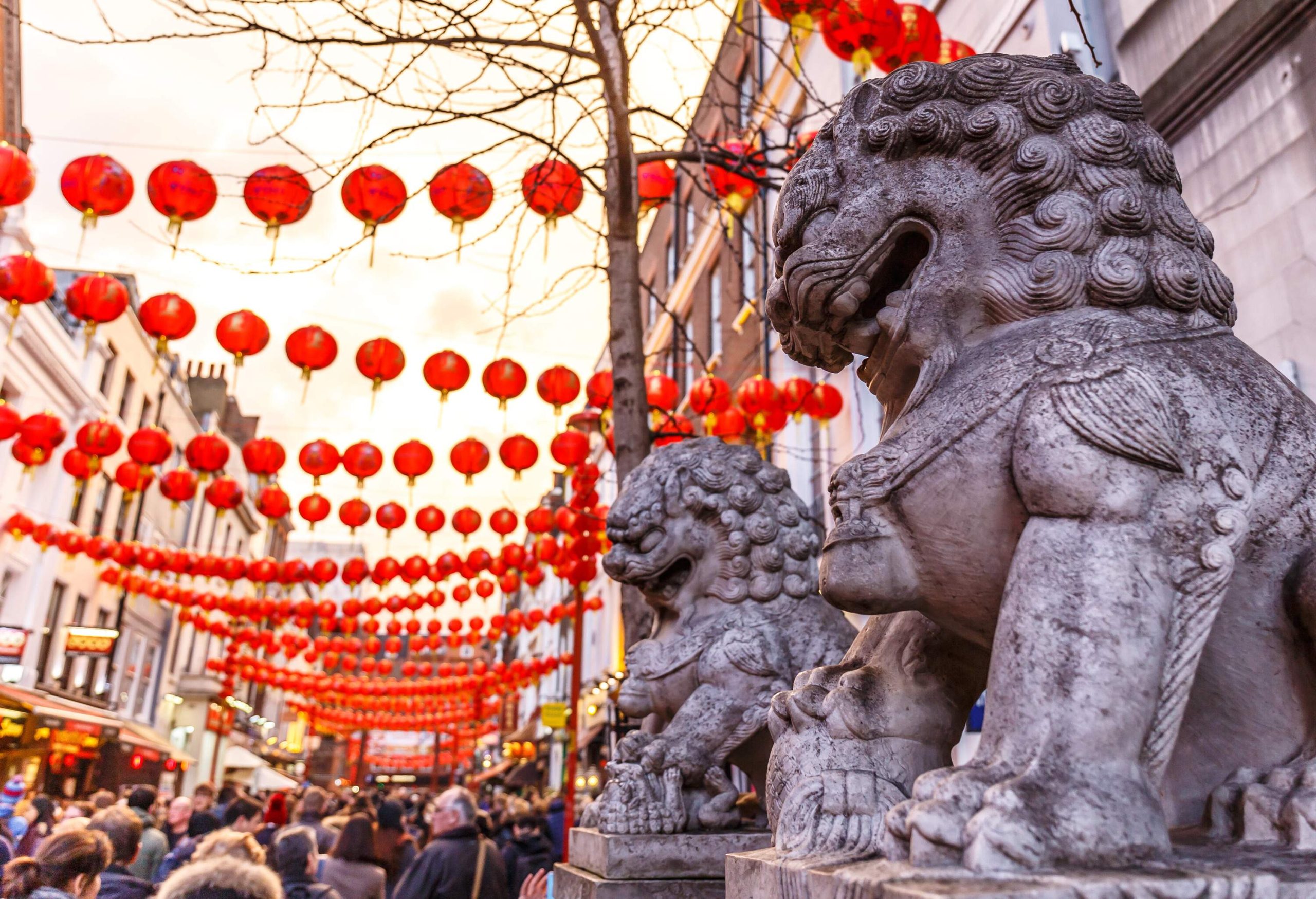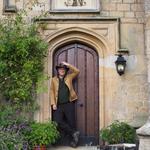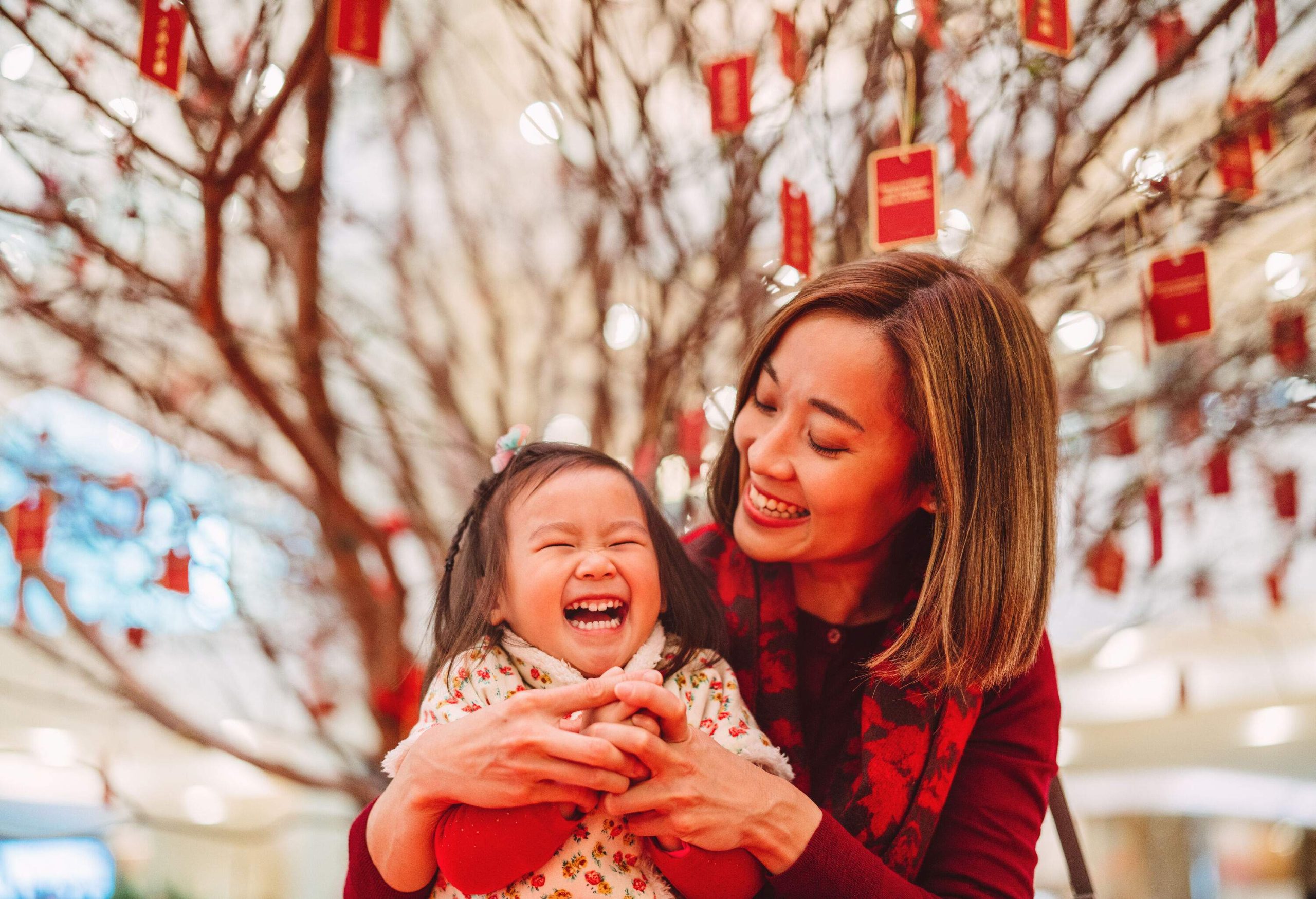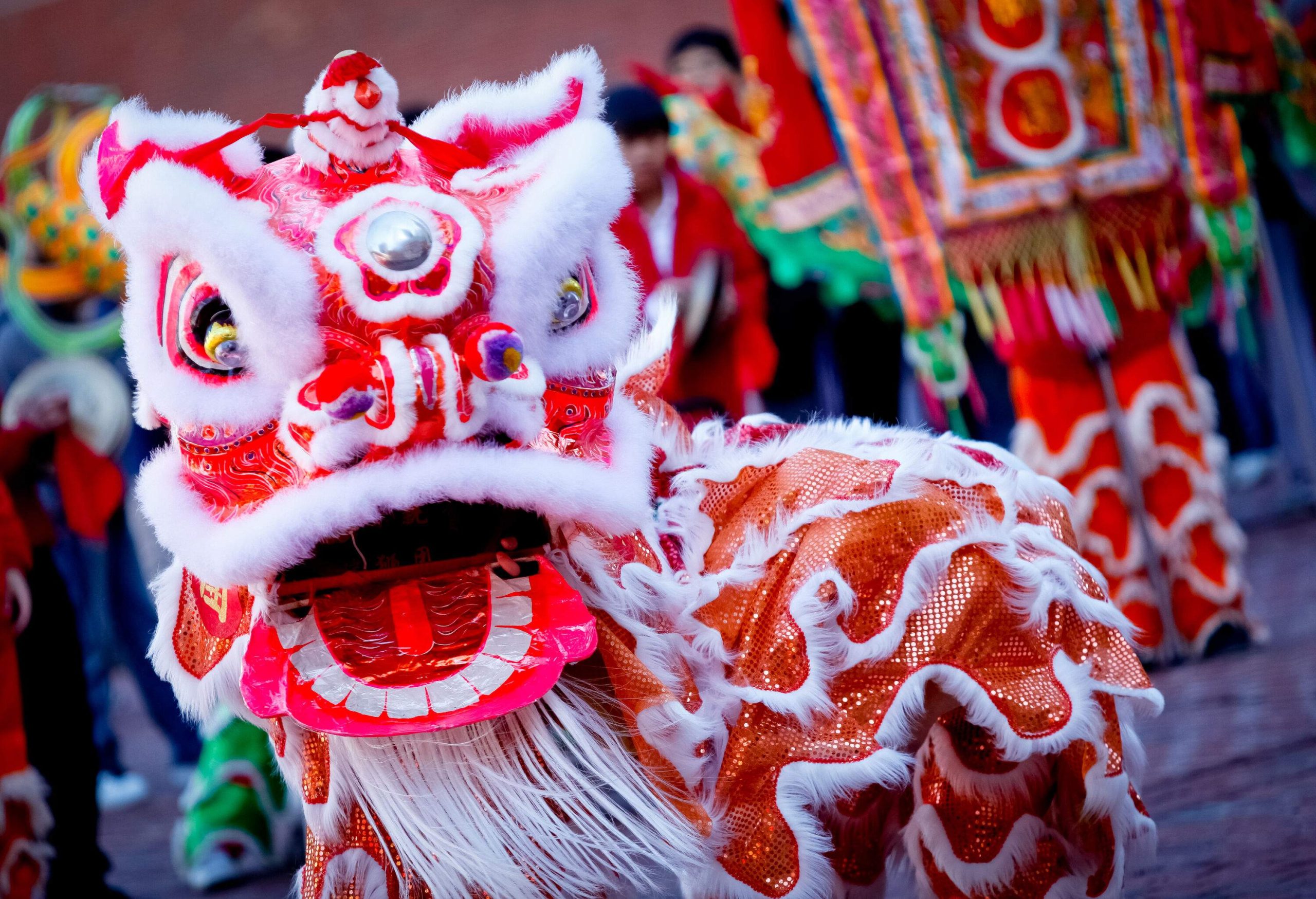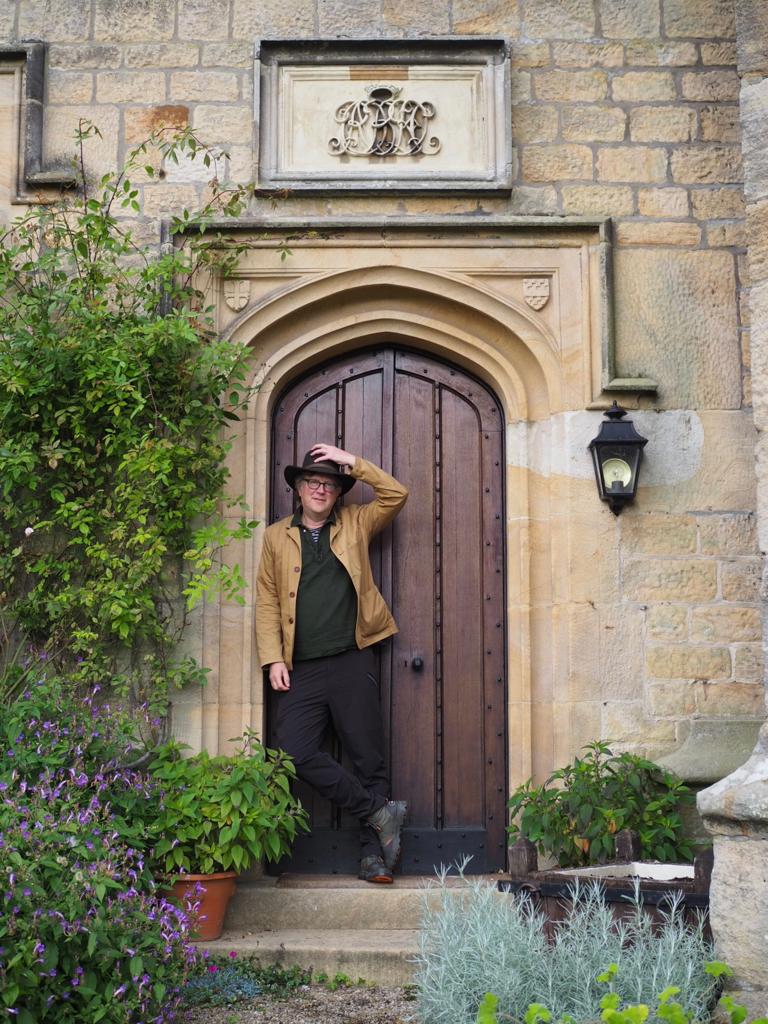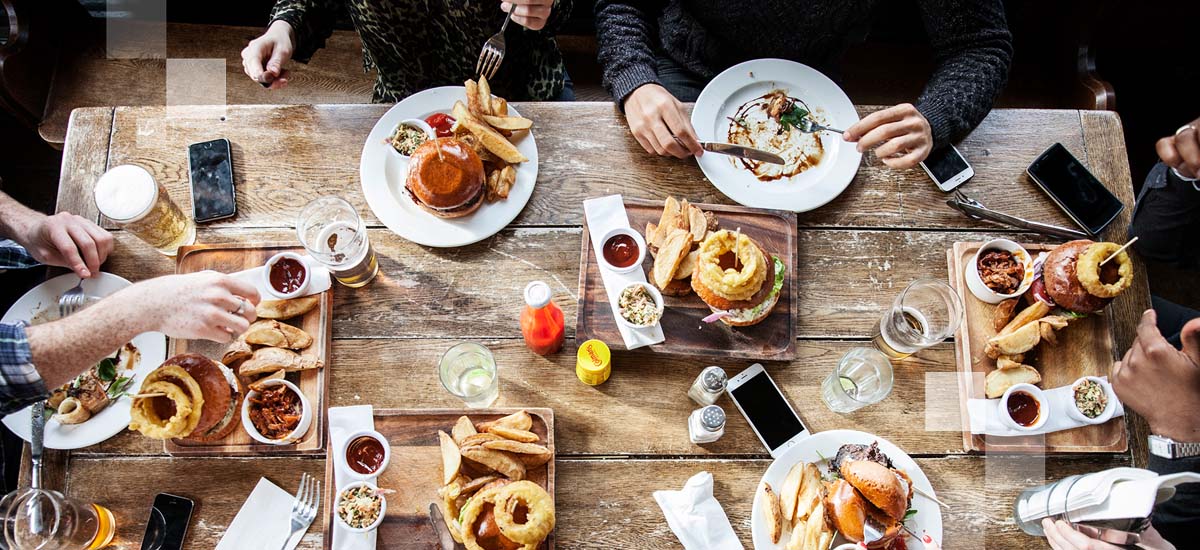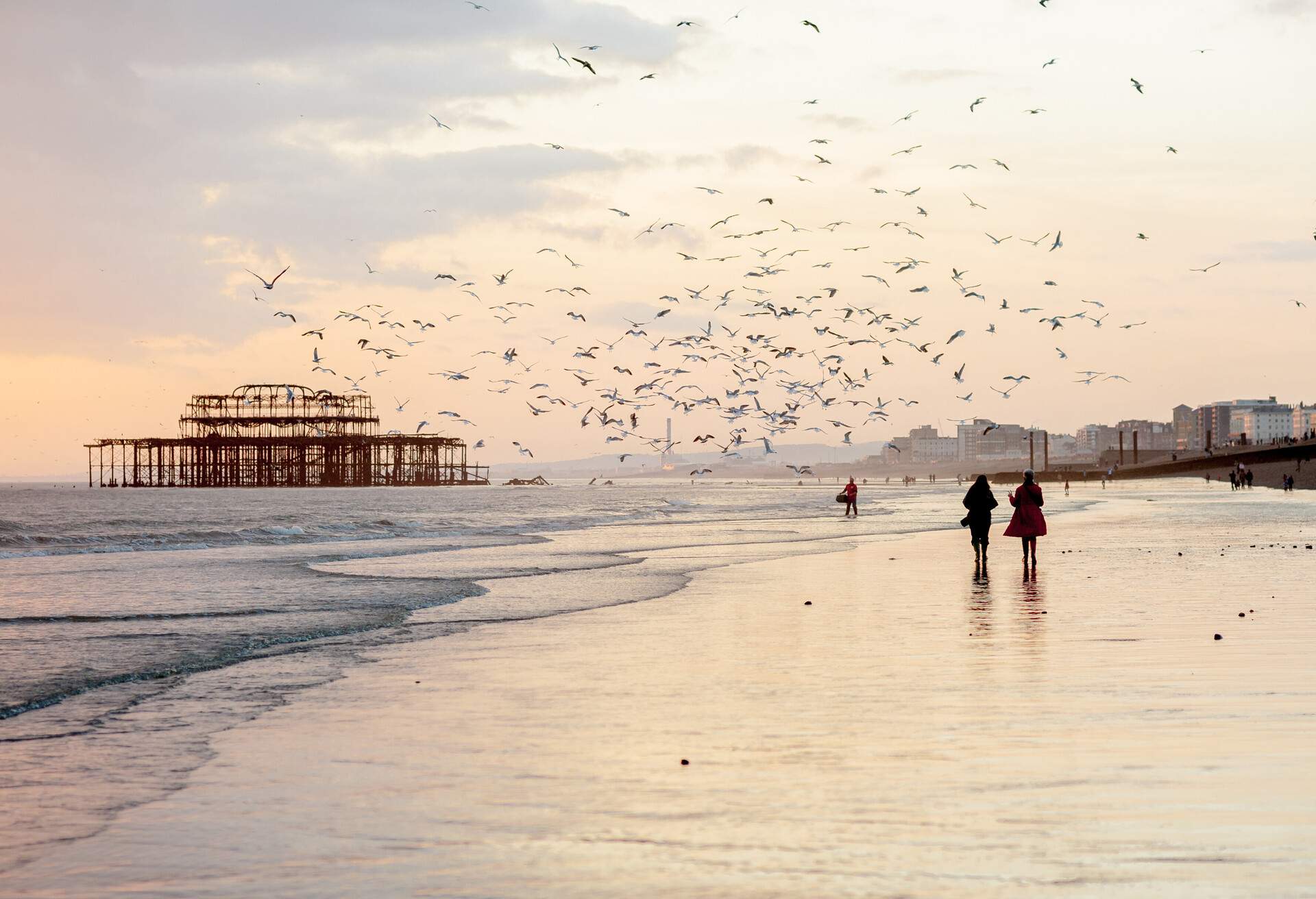London is one of the most culturally diverse cities in Europe, which is one of the things I love about my hometown. The Chinese community has been here since the 18th century, with its cultural hub in the West End’s Chinatown – every year, visitors and locals alike converge here to celebrate the Chinese New Year in London.
Also known as Lunar New Year and the Spring Festival, it’s full of positive energy, marking a time of renewal. And while it’s celebrated by around 2 billion people around the world, London has made it a very unique occasion.
Chinese New Year in London
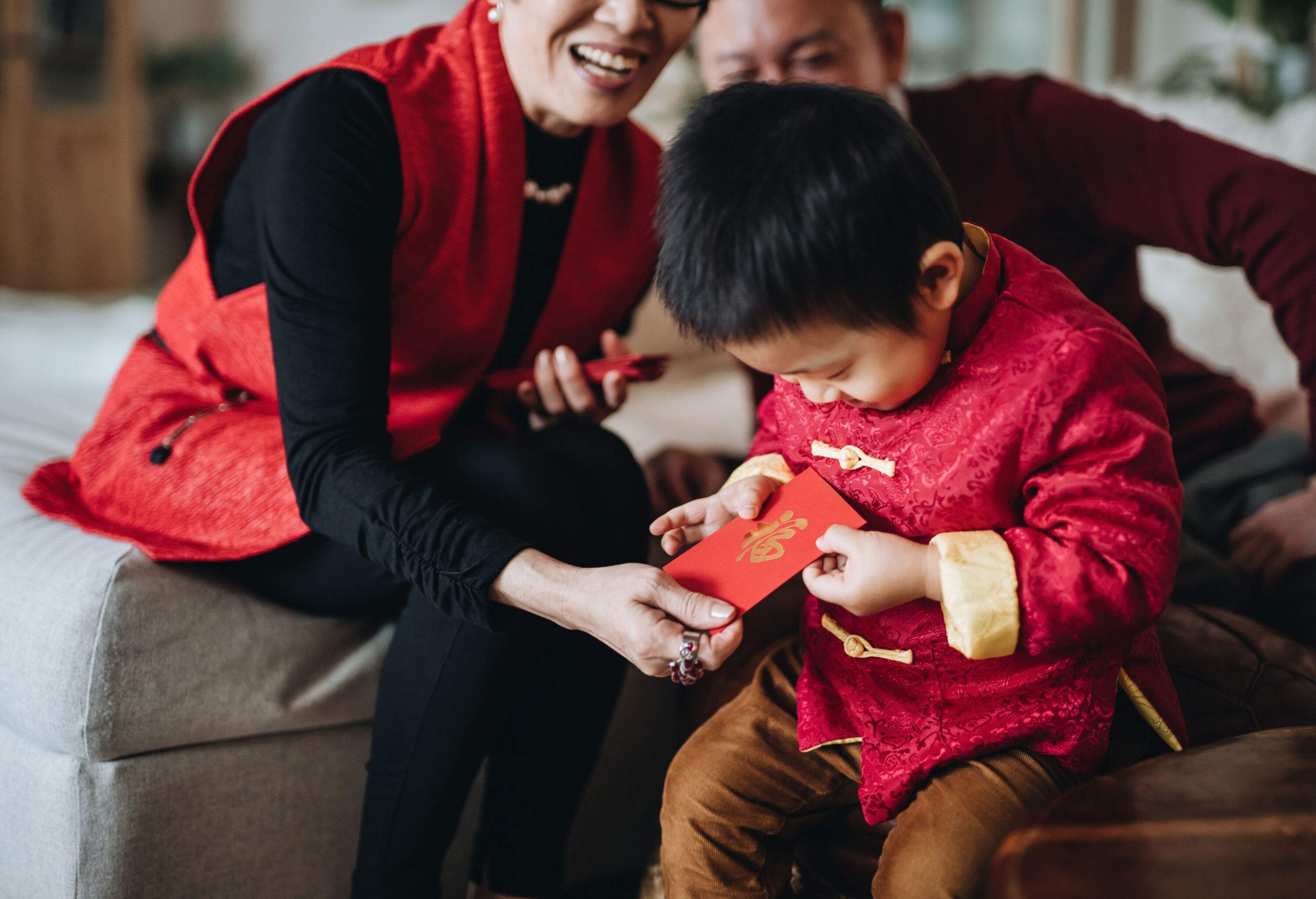
In London, the celebrations first started around 50 years ago as a low-key community event in the heart of Chinatown, an area that has evolved since first being founded in the 1950s. Now, though, they are organised by the London Chinatown Chinese Association and have grown to become the biggest celebrations outside of Asia.
Communities from around the world come for the London party, which starts with a parade that moves from Shaftesbury Avenue to Trafalgar Square, culminating in a luminous display of lanterns. There are food stalls, costume displays, and stage performances that will appeal to all ages. But there are also smaller celebrations around the city – I remember being in Borough Market last year when the clash of cymbals heralded a lion dance, snaking around the food stalls to bring luck.
The significance of Chinese New Year 2024: The Dragon
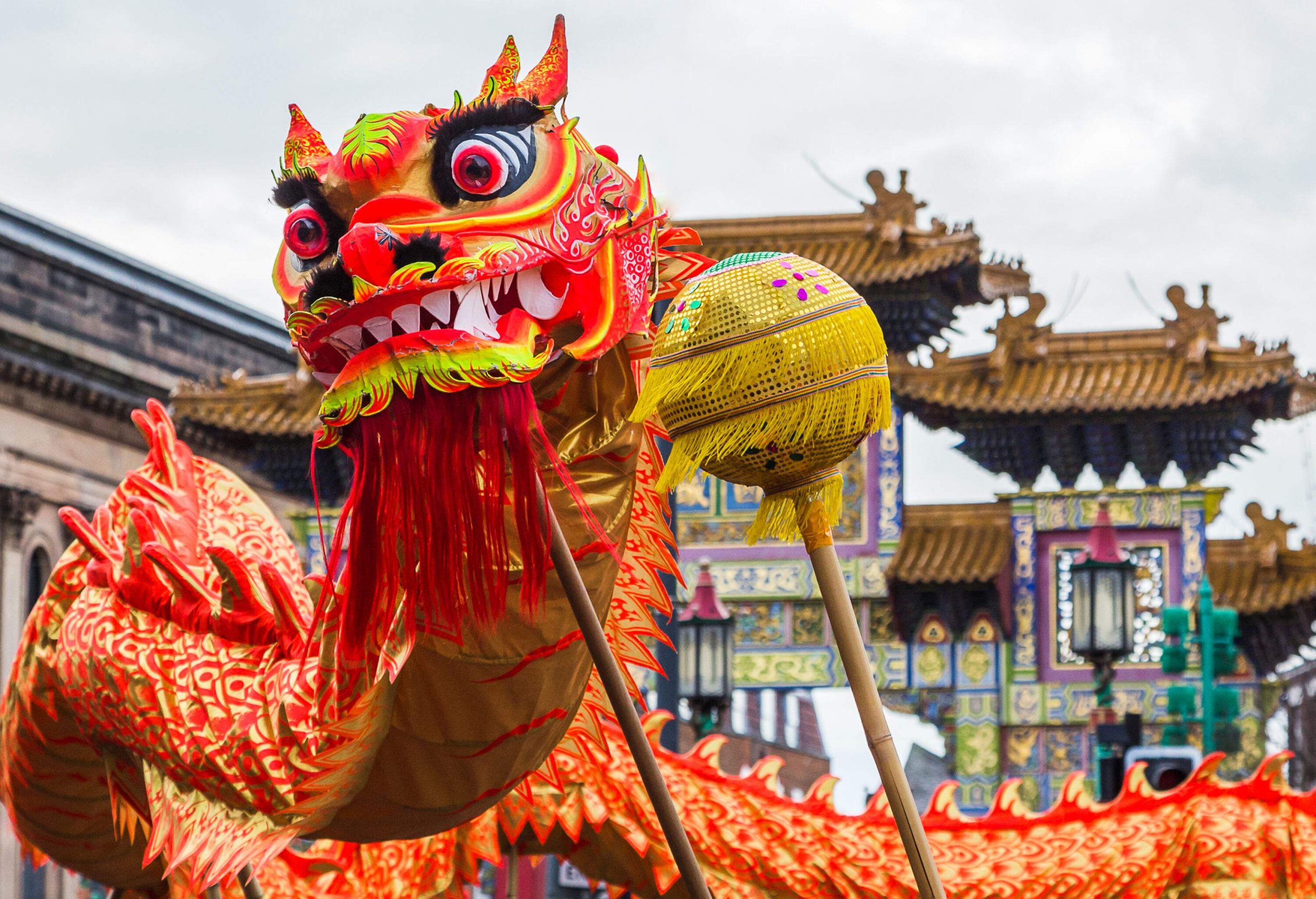
The new year is based on the lunar and solar calendars, so the actual date varies every year, as do the 12 animals of the Chinese zodiac: the rat, ox, tiger, rabbit, dragon, snake, horse, goat, monkey, rooster, dog, and pig.
For 2024, it’s the turn of the Dragon, whose day falls on Saturday 10 February, then runs for 16 days. The dragon is particularly special, as it’s the only mythical beast in the zodiac. In some cultures, it represents evil, but in Chinese culture, it’s a symbol of power and authority – bringing good luck, strength, and health. It’s also the male element Yang. People born in the Year of the Dragon are thought to be charismatic, confident, strong, and naturally gifted.
Traditional customs and practices
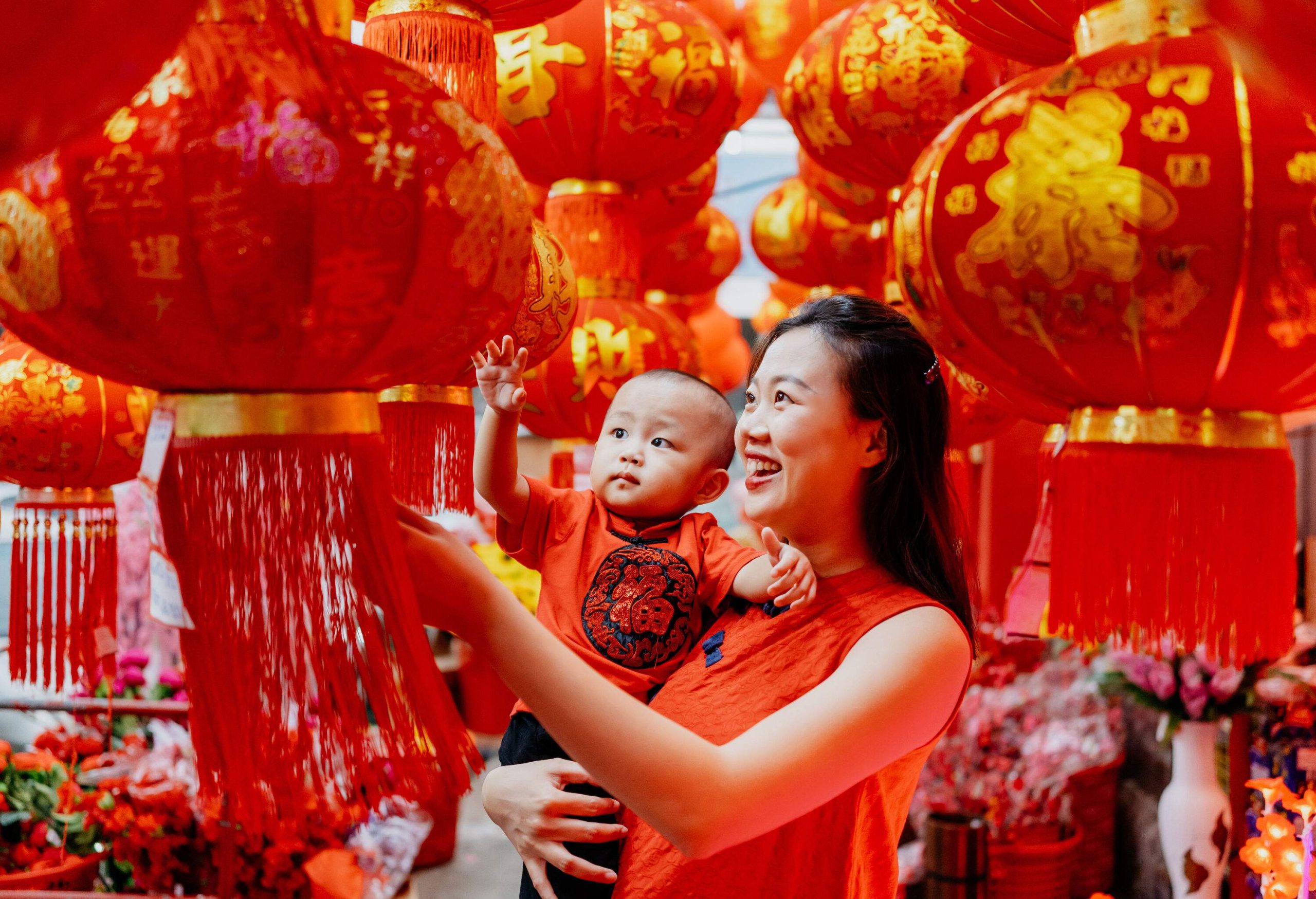
A big effort is put into sprucing up the house for Chinese New Year – from folk paintings livening up walls to red lanterns hanging everywhere – as a way to welcome the God of Wealth. The colour red appears in all shapes and forms.
It’s an important reunion for the family too, this festival is all about welcoming the new and the good and taking away the bad and the old. Bad spirits are banished and ancestors are worshipped through rituals such as incense-burning. And everyone dresses up for the New Year’s Eve banquet, known as Nian Ye Fan, followed by midnight firecrackers.
Chinese New Year celebrations in London
The 2024 Chinese New Year festival in London takes place on 11 February, the day after the official Chinese New Year. Look out for the Lucky Money God, who can often be found on Charing Cross Road; he might bring you untold wealth. And don’t miss a photo opportunity with a fiery lion – very Instagrammable.
The Chinese New Year parade
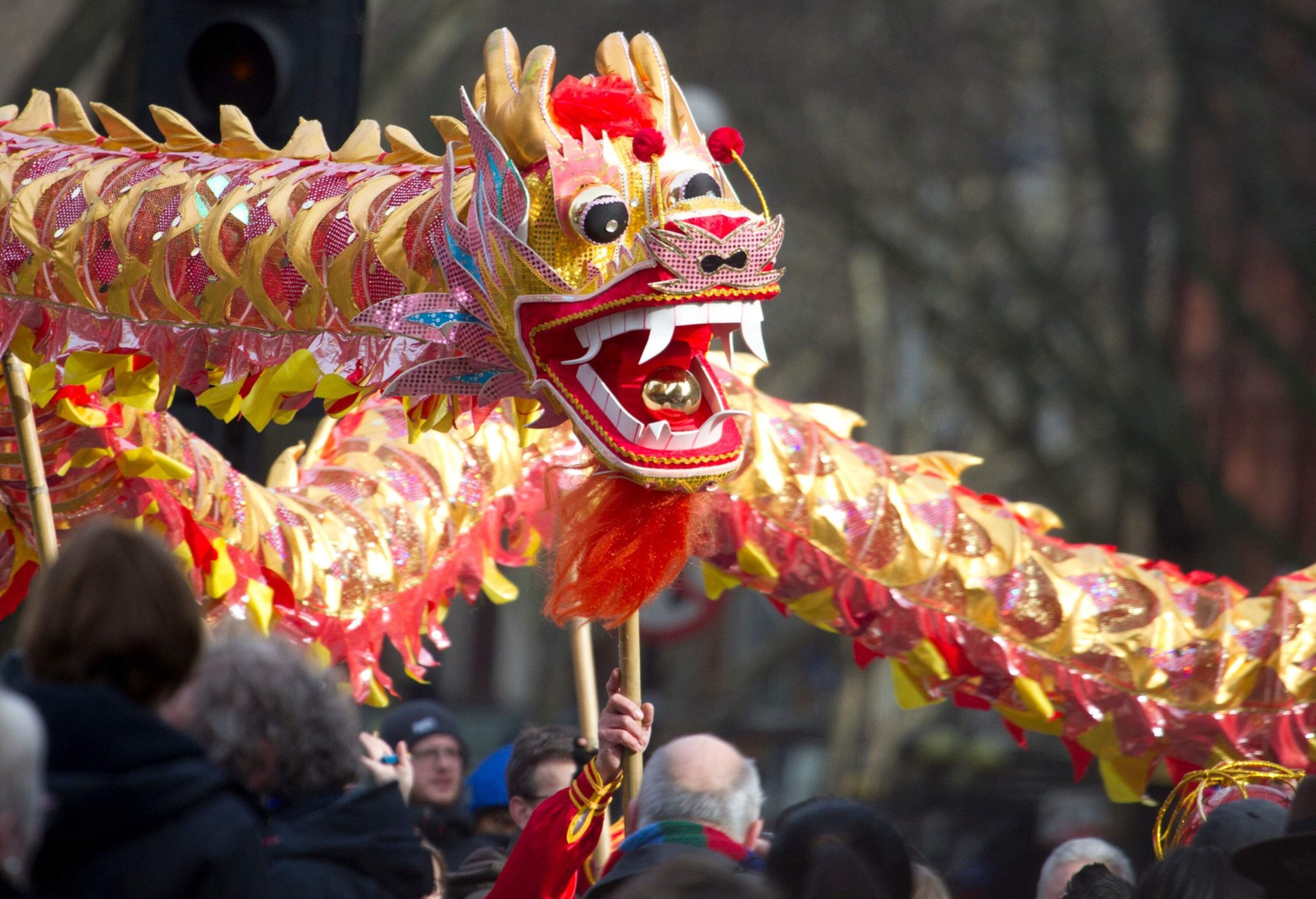
The main parade in London starts on Charing Cross Road near St Martin-in-the-Fields church at around 10 am. It then continues through Shaftesbury Avenue into Chinatown, ending up at Trafalgar Square for the lions’ eye-dotting ceremony, the famous stone lions are given temporary pupils so that they can ‘see’, a symbolic part of the celebrations.
The costumes bring the streets alive with a dazzling display of papier-mâché lions, dragons, and energetic dancers. Oh, and it’s noisy: cymbals and drums crash and bang all around – those evil spirits don’t like noise. Once the lion dancers arrive in Trafalgar Square, make sure you stick around for the acrobats and opera singers.
If martial arts are your thing, head for the dedicated zone in Shaftesbury Avenue, where various demonstrations (a personal favourite is the Shaolin kung fu) take place.
The Dragon Dance is the star of the show, though – no matter which animal’s year. Underneath these flamboyant costumes are several people who contort the dragon in fluid movements in and out of the crowd. As a finale, there is usually a full-on pyrotechnic display and a techno lion dance, which is worth the wait.
Note that it will get very busy, so it’s wise to plan your route and arrive early. There are often screens in Leicester Square showing the parade performances. Tube stations close to the action are Leicester Square, Piccadilly Circus and Tottenham Court Road. And remember, this is London, so wrap up warm.
What traditional foods are associated with the Lunar New Year?
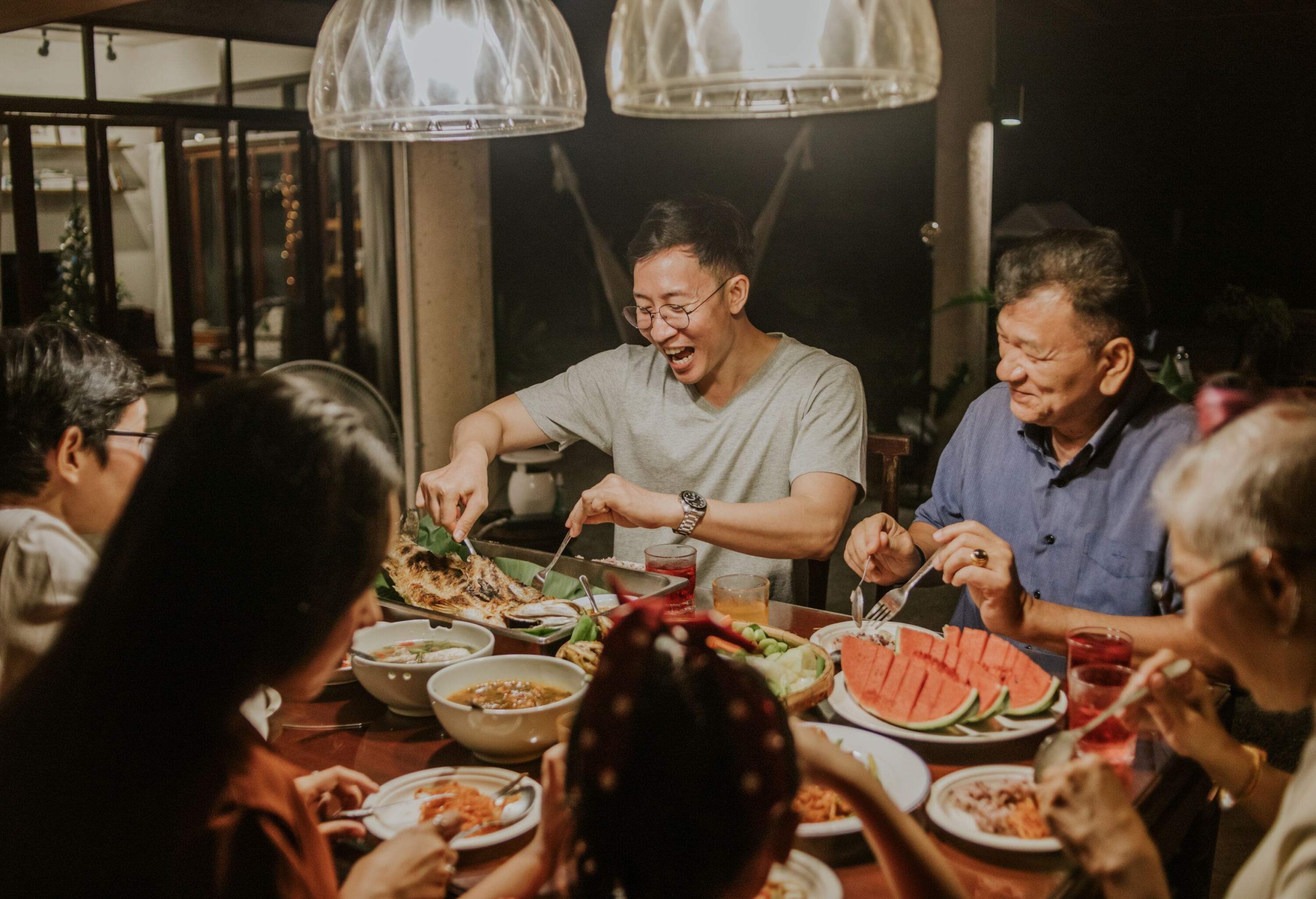
Fish is a big part of the New Year banquets. Look out for people eating yusheng salad, which is tossed into the air with chopsticks: the higher the ingredients go, the more luck will rain down over the next year.
Other food customs vary for China’s different regions, from Northern China’s ‘Jiaozi’ (dumplings), thought to represent wealth, to noodles, whose length is a symbol of longevity. In the Beijing region ‘Laba Congee’, made with rice, beans, peanuts, dried fruit, lotus seeds, and nuts, symbolises the previous harvest.
In London, I love finding out which restaurants are preparing special menus for the occasion – favourites include the Pan Pacific London Hotel in the City and MiMi Mei Fair in Mayfair, as well as long-time regulars such as New Yoon Fung and Royal China Club. Thanks to their wallet–like shape, it’s considered lucky to eat bao buns – so head to Bao in Kings Cross or Shoreditch, or the Hong Kong-inspired Bun House in Chinatown. Make a beeline for the food trucks dotted around the parade for some tasty Chinese street food.
Where can I find family-friendly Lunar New Year activities in London?
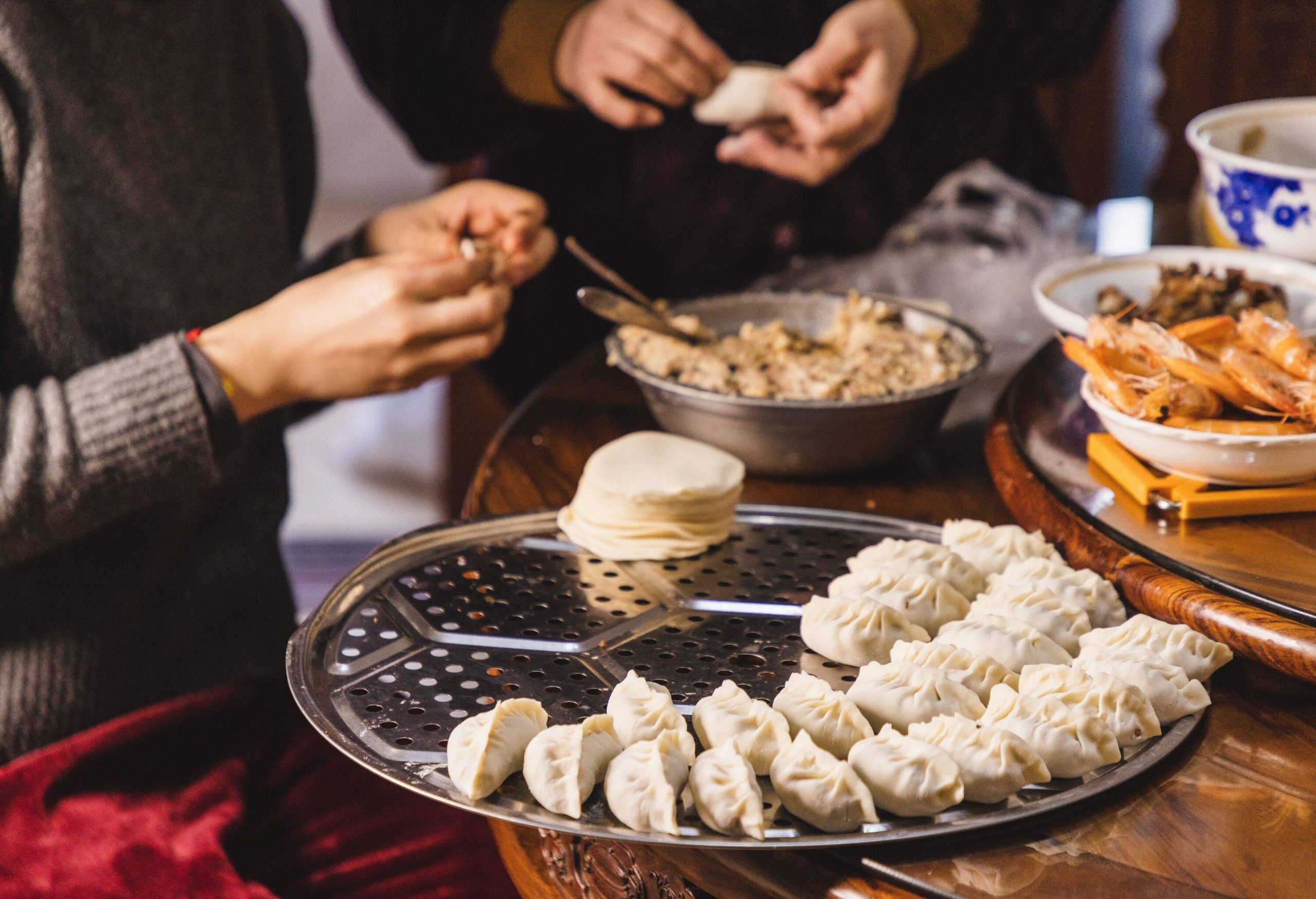
There are workshops taking place at various museums, such as the National Maritime Museum, on Saturday 3 February, with the chance to get creative by making hongbaos (paper envelopes to put money in) while flame-haired lion dancers rear and turn on the world map.
For an insight into the clockwork treasure from China’s Forbidden City, visit the Zimingzhong exhibition at the Science Museum, which will run from Thursday 1 February. You could also head to the Leicester Square family zone. The National Gallery is often involved with creative family sessions and it’s a good vantage point for the New Year costume displays.
How about trying your hand at making traditional dumplings? There’s a Chinese New Year Dumpling Making Celebration session on Saturday 10 February at Toynbee Studios in East London’s Commercial Street.
Also worth checking out is the Goldsmiths 2024 Chinese New Year Gala Show and Exhibition, which will take place on 21 February 2024, and includes performances and authentic food.
For an extraordinary live show exploring China before communism, Shen Yun is a life-affirming dance and music event that will be in London from 26 January – 4 February, at London’s Eventim Apollo Theatre. Look out for the spectacularly lit up London Eye, which has been illuminated red for some years to honour the festival with its warm glow.
This guide to London’s Chinese New Year celebrations takes you to the heart of the city, but it’s just one of many things to do and see here. Check out the best things in London for unmissable sights, and discover how magical the city is in winter and vibrant in the summer. Watching the Chinese New Year Parade won’t cost you a penny – and neither will these other free attractions.
How KAYAK knows what to put in this guide
I’ve been living in London for almost 30 years, delving into its traditions and neighbourhoods. The Chinese New Year parade is a highlight of London’s busy events calendar and one I’ve attended several times – sometimes with friends, other times with family. I’ve combined my on-the-ground knowledge with KAYAK’S expert tips to create this London Lunar New Year guide.

